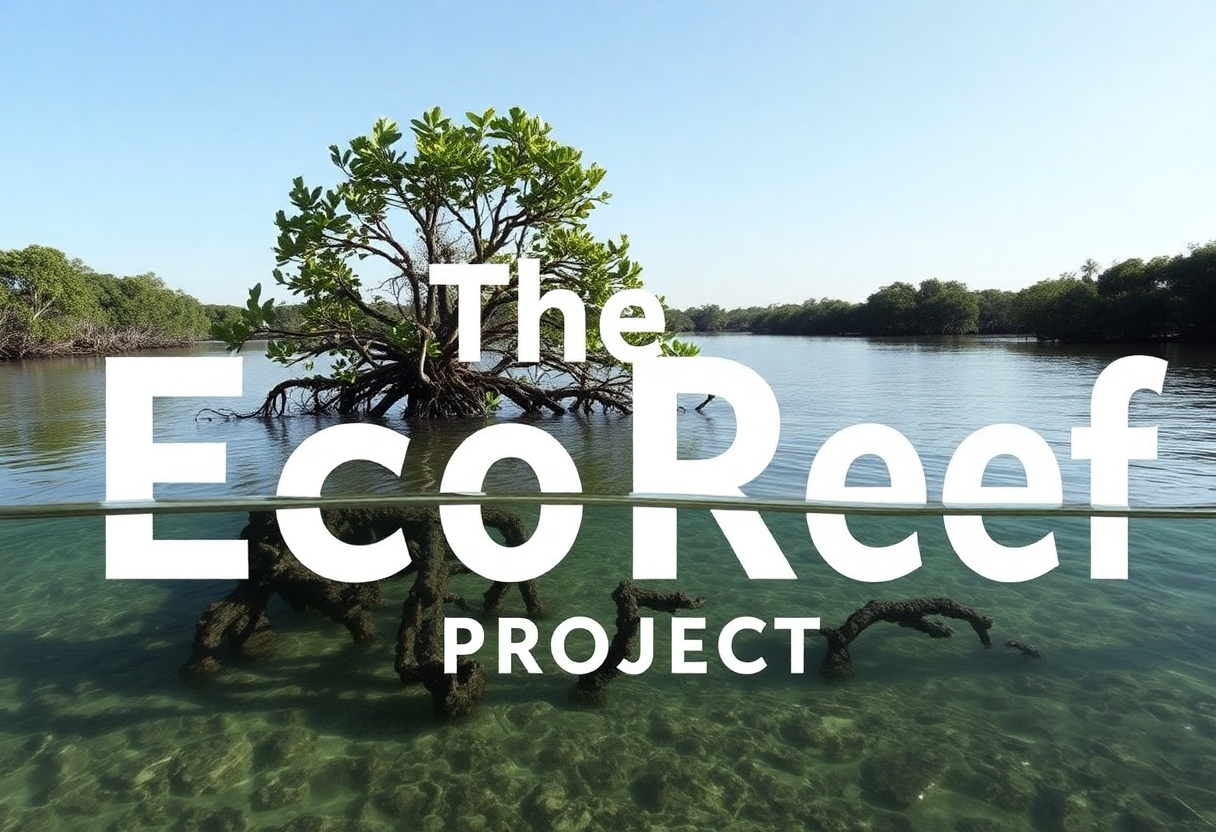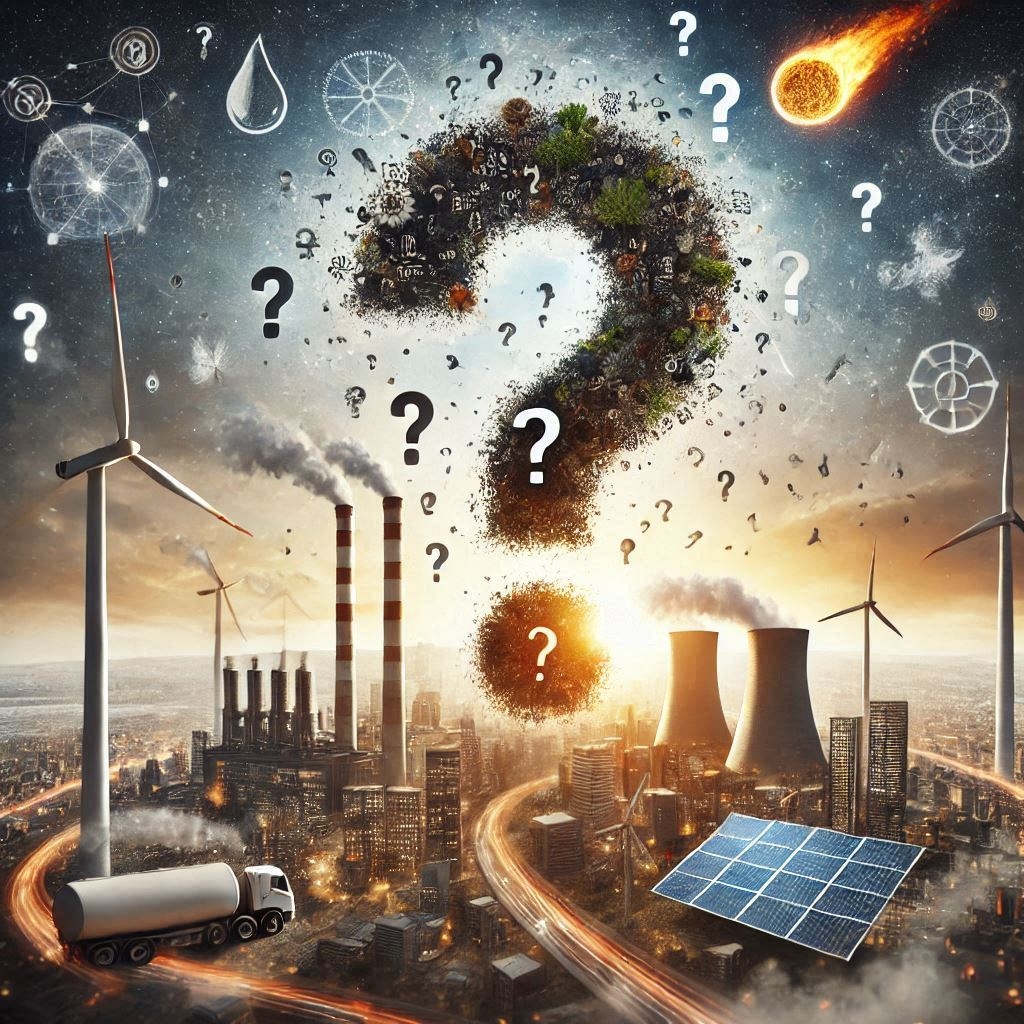Bass Strait Wind Turbine 2030 Project Smoke And Mirrors Or Powerful Mirage?

Stop Playing Politics with Our Planet’s Future
When it comes to energy especially renewable energy, environmental conservation must come first. This requires long-term objectives, not short-term political maneuvers that win elections. The environment is crucial and addressing its challenges demands big thinking, real strategies, and a true commitment—not just lip service for media headlines or political gain.
Large-scale projects may appear glamorous, but smaller initiatives often yield better, quicker results. In Australia, politicians are entangled in red tape and beholden to lobby groups and big business, which stifles genuine progress and care. This approach is disastrous for our environment now and in the future.

The real question is?
Do these organizations genuinely care about the environment, or are they just after votes and profit? Neglecting environmental conservation will cost us dearly—impacting not only our planet but our quality of life. Setting targets like 2050 is fine, but we must act now to avoid making things worse. Currently, the powers that be are more focused on their own gains than the good of humanity, our country, or the world.
The environmental issue seems to be a dark place where interesting things happen in poltics.
In the shadows, where whispers of influence echo, true environmental action often gets lost in the dance of political theater and just the bad smell of power.

Bass Strait Wind Turbine Project
In the vast expanse of the Bass Strait, an intriguing project has captured the attention of many. the offshore wind turbine initiative. This ambitious endeavor, backed by the Federal Government, seeks to harness the powerful winds of the Bass Strait to generate renewable energy. But what exactly is happening with this project, and is it a genuine future prospect or merely a grand vision?
The initial proposal for the project covered a vast area, but it has since been significantly scaled back due to community feedback. The final zone now encompasses a sizeable area off Tasmania’s northern coast. This adjustment was made in response to concerns from local leaders, industry groups, fishers, unions, and community groups about the potential impacts on marine life, fishing activities, and the visual landscape.

Background and Development
The concept of utilizing offshore wind energy in the Bass Strait has been under consideration for several years, driven by the region’s exceptional wind conditions and the pressing need for sustainable energy sources. Situated between mainland Australia and Tasmania, the Bass Strait is renowned for its strong and consistent wind patterns, making it an ideal location for wind energy projects.
The federal government’s endorsement of the project represents a significant step towards renewable energy, aligning with Australia’s broader goals of reducing reliance on fossil fuels, decreasing greenhouse gas emissions, and meeting the growing energy demands of southeast Australia.

Community and Environmental Concerns
Community feedback has played a pivotal role in shaping the project’s final design. Concerns about the potential impact on marine ecosystems, local industries, and the visual aesthetics of the coastline prompted a thorough reassessment. In response, the project was reconfigured to minimize its footprint and visual impact, with the final zone positioned further offshore.
Environmental assessments are ongoing to ensure the project does not harm marine life. These evaluations include studies on fish populations, seabird habitats, and the broader marine ecosystem. The goal is to implement measures that mitigate any potential negative impacts, ensuring the project’s long-term sustainability. This is weird as this is one of the most delicate and vital ecosystems in the world.

Economic and Job Creation Potential
The Bass Strait wind turbine project promises significant economic benefits, particularly in terms of job creation. The construction phase is expected to generate numerous employment opportunities across various sectors, including engineering, electrical work, marine operations, and logistics. This influx of jobs could provide a substantial boost to local economies, especially in Tasmania and surrounding regions.
Moreover, the project offers opportunities for workers transitioning from traditional energy sectors to renewable energy. Emphasizing local manufacturing and suppliers aims to maximize the economic benefits within Australia, supporting Australian businesses and communities.

Technological and Operational Challenges
Developers face several technological and operational challenges in bringing the Bass Strait wind turbine project to fruition. The offshore location necessitates advanced engineering solutions to install and maintain the turbines in a harsh marine environment. Considerations include wave dynamics, seabed conditions, and corrosion resistance, all crucial for ensuring the turbines’ longevity and efficiency.
Additionally, developers must obtain feasibility licenses by demonstrating compliance with environmental regulations and community requirements. This involves conducting detailed environmental impact assessments, engaging in community consultations, and adhering to regulatory frameworks designed to protect marine ecosystems and local industries.

Energy Production and Environmental Impact
The potential energy production from the Bass Strait wind zone is substantial. By harnessing the strong and consistent winds of the region, the project could provide a reliable source of renewable energy, significantly reducing Australia’s dependence on fossil fuels and enhancing national energy security. The project’s contribution to lowering greenhouse gas emissions aligns with Australia’s commitment to combating climate change and transitioning to a sustainable energy future.
However, managing the environmental impact is crucial. The installation and operation of offshore wind turbines can affect marine ecosystems, including fish populations and seabird habitats. Developers are working closely with environmental experts to implement mitigation measures that minimize these impacts, ensuring the project’s long-term sustainability.

Current Status and Future Prospects
As of now, the Bass Strait wind turbine project is still in its early stages. Developers are in the process of applying for feasibility licenses, which will allow them to assess the viability of their projects within the declared zone. The Tasmanian government has already signed a memorandum of understanding with a consortium proposing a wind farm in the Bass Strait.
It’s important to note that the project’s realization is not yet certain. Developers must demonstrate their commitment to Australian manufacturing, local suppliers, and the overall benefits to Tasmania and Australia’s energy security. The approval process is expected to take several years, with turbines unlikely to be operational until the next decade.

Environmental Impact or Political Maneuvering?
The Bass Strait wind turbine project has sparked debate about its true motivations. Some argue that the project is a genuine effort to harness renewable energy and combat climate change. The environmental benefits of reducing greenhouse gas emissions and transitioning to sustainable energy sources are significant. The project also promises economic benefits, including job creation and support for local industries.
However, others view the project with skepticism, suggesting it may be more about political maneuvering than genuine environmental concern. The timing of the project’s announcement and the emphasis on job creation and economic benefits could be seen as an attempt to garner public support ahead of upcoming elections. Critics argue that the project may never come to fruition, serving more as a political talking point than a concrete plan.
The truth likely lies somewhere in between. While the project has the potential to deliver significant environmental and economic benefits, its success depends on navigating complex regulatory, environmental, and community challenges. The feasibility and long-term sustainability of the project will ultimately determine whether it becomes a cornerstone of Australia’s renewable energy future or remains an ambitious vision.

Potential Environmental Impact
The Bass Strait wind turbine project, while promising substantial benefits in terms of renewable energy and economic growth, also raises significant environmental concerns. The installation and operation of offshore wind turbines have the potential to impact marine ecosystems in several ways.
One of the primary concerns is the disruption of marine habitats. The construction of wind turbines involves significant underwater activities, including the installation of turbine foundations, cabling, and support structures. These activities can disturb the seabed and displace marine organisms, affecting benthic communities and potentially leading to habitat loss for certain species.
Noise pollution is another concern. The construction and operation of wind turbines generate underwater noise, which can interfere with the communication, navigation, and feeding behaviors of marine mammals, fish, and other sea creatures. This noise pollution can have both short-term and long-term effects on marine wildlife, depending on the intensity and duration of exposure.
Moreover, the physical presence of wind turbines can pose risks to bird and bat populations and as I say pose. Turbines can act as obstacles, leading to collision risks for birds and bats that fly through the area. Moving object from time to time hit things. Additionally, the alteration of local wind patterns due to turbine operations can affect the behavior and migration routes of avian species which is a much bigger issue.
To address these concerns, developers are required to conduct comprehensive environmental impact assessments (EIAs) as part of the project approval process. These assessments involve detailed studies of the marine and avian environments, identifying potential impacts and proposing mitigation measures to minimize harm. Mitigation strategies may include designing turbine layouts that avoid critical habitats, implementing noise reduction technologies, and monitoring wildlife interactions with the turbines.
While the Bass Strait wind turbine project has the potential to contribute significantly to renewable energy production and economic development, it must be carefully managed to mitigate its environmental impact. The success of the project will depend on balancing the need for sustainable energy with the protection of marine and avian ecosystems, ensuring a harmonious coexistence between technological advancement and environmental stewardship.

Feasibility in the Bass Strait
———————————-
Navigating the Challenges of a Treacherous Waterscape
The Bass Strait, renowned for its fierce weather conditions and tumultuous seas, presents unique challenges for the construction and operation of an offshore wind turbine project. This stretch of water, separating mainland Australia from Tasmania, is infamous for its unpredictable weather patterns, strong currents, and frequent storms. Understanding the feasibility of such a project in this environment requires careful consideration of several factors. Building this Bass Strait Wind Turbine is very complicated. It is not just the building but the upkeep of Bass Strait Wind Turbine in all weather conditions.
Harsh Weather and Ocean Conditions
The Bass Strait’s notorious weather includes high winds, large swells, and severe storms, which can pose significant risks to construction activities and long-term turbine operation. These conditions necessitate robust and resilient engineering solutions to ensure that the turbines can withstand the harsh marine environment. Turbine designs must account for extreme wind speeds, wave forces, and potential impacts from debris.

Advanced Engineering and Technology
Building wind turbines in the Bass Strait requires advanced engineering techniques and cutting-edge technology. This includes the use of specialized vessels and equipment capable of operating in rough seas, as well as innovative foundation designs that provide stability on the often challenging seabed conditions. The Bass Strait Wind Turbine is a project that will change the area forever.
Technologies such as floating wind turbines, which are tethered to the seabed but float on the surface, may offer viable solutions for areas with deep waters and variable seabed characteristics. The planning of an idea like Bass Strait Wind Turbine is so complicated and everchanging that the engineers may design it perfectly from what they know but the unknown of the Bass Strait is where they will have to adapt. The Bass Strait Wind Turbine will be very hard to engineer but the costing will most probably blow out as it is such a complicated land area.
Logistics and Supply Chain Management
The remote location and difficult access to the Bass Strait add another layer of complexity to the project’s feasibility. Efficient logistics and supply chain management are critical to ensure that construction materials, personnel, and equipment can be transported safely and efficiently to the site. This involves meticulous planning, coordination with maritime authorities, and contingency plans for weather-related disruptions.

Environmental and Regulatory Considerations
Environmental and regulatory factors also play a crucial role in the feasibility of the project. Developers must comply with stringent environmental regulations designed to protect marine ecosystems and local wildlife. This includes conducting comprehensive environmental impact assessments, implementing mitigation measures, and ongoing monitoring to minimize any adverse effects on the environment. Additionally, securing the necessary permits and licenses involves navigating a complex regulatory landscape, requiring collaboration with government agencies and stakeholders.
Economic Viability
The economic viability of constructing and operating wind turbines in the Bass Strait is another critical consideration. The high costs associated with offshore wind projects, including construction, maintenance, and potential delays due to adverse weather conditions, must be balanced against the expected benefits of renewable energy generation. Economic analyses and feasibility studies help determine whether the long-term financial returns justify the substantial initial investments.

Proven Successes and Global Examples
While the challenges are significant, successful offshore wind projects in similarly harsh environments around the world provide valuable insights and lessons. For example, offshore wind farms in the North Sea, which also faces extreme weather and sea conditions, have demonstrated the feasibility of such projects with the right technologies and strategies. Learning from these global examples can help inform and improve the approach to developing the Bass Strait wind turbine project.
Constructing an offshore wind turbine project in the Bass Strait is undoubtedly challenging due to its treacherous waters and harsh weather conditions. However, with advanced engineering solutions, meticulous planning, robust logistics, and adherence to environmental and regulatory requirements, it is feasible but has to be adaptable. The Bass Strait Wind Turbine project’s success will depend on effectively managing these challenges while leveraging global expertise and innovative technologies to harness the powerful winds of the Bass Strait for renewable energy and coming in on a correct cost without a blowout.

Balancing Renewable Energy and Environmental Conservation
As proponents of wind turbines and other wind power generating systems, many of us recognize the immense potential these technologies hold for creating a sustainable and clean energy future. However, it is equally important to consider the environmental impacts of their placement, particularly in delicate and ecologically significant areas like the Bass Strait Wind Turbine.
While the strong and consistent winds in such regions make them attractive sites for wind projects, their ecological sensitivity demands careful foresight. We must ask ourselves whether there are alternative locations that offer sufficient wind resources without compromising fragile ecosystems. By prioritizing less environmentally sensitive areas for wind turbine installations, we can avoid the potential for significant habitat disruption, marine life disturbance, and the visual impact on pristine landscapes.

The need for responsible site selection is underscored by the potential costs of addressing environmental damage. In some cases, the long-term expenses of mitigating ecological harm, restoring habitats, and compensating for lost biodiversity could outweigh the benefits of the energy produced. These additional costs can place a substantial financial burden on both developers and the public, diverting funds that could be better invested in other sustainable initiatives.
By using our foresight and planning strategically, we can identify and prioritize locations that minimize environmental impact while maximizing energy generation. This approach not only protects our planet’s natural resources but also ensures that the transition to renewable energy is both economically and ecologically sustainable. It is crucial to engage with environmental experts, conduct thorough assessments, and involve local communities in the decision-making process to find the best balance between energy development and environmental stewardship.
The goal is to harness the power of wind responsibly, demonstrating that renewable energy can coexist harmoniously with nature. By making thoughtful choices about where we place wind turbines, we can contribute to a greener future without compromising the health of our planet’s most delicate environments.

Long-Term Global Impacts
—————————————
Immediate Benefits & Future
While the Bass Strait wind turbine project promises to harness substantial wind resources and offer cheaper energy costs, it is crucial to consider the long-term global impacts of such initiatives. The allure of immediate economic benefits and renewable energy should not overshadow the potential environmental consequences on a much larger scale.
One of the significant concerns is the effect on marine life, particularly large marine mammals such as whales. Wind turbines, especially in offshore locations, can create underwater noise pollution, which interferes with the natural communication and navigation abilities of these animals. Whales, which rely heavily on sound for echolocation and migration, can become disoriented by the noise generated by turbine construction and operation. This disorientation can lead to tragic outcomes, such as mass beachings and disruptions to their migratory patterns.
Moreover, the placement of wind turbines in delicate marine environments can have cascading effects on the broader ecosystem. Disruptions to the seabed during construction can affect benthic organisms and alter the habitat structure, leading to changes in the food web. These ecological shifts can impact fish populations and other marine species, ultimately affecting the livelihoods of local communities that depend on fishing.

It is also essential to consider the cumulative impact of multiple offshore wind projects globally. As more countries turn to offshore wind energy, the combined effects on marine life and ecosystems could become more pronounced. This necessitates a careful and holistic approach to renewable energy development, ensuring that individual projects do not contribute to a larger problem.
The long-term environmental costs must be weighed against the immediate economic benefits. While cheaper energy can provide relief to consumers and boost local economies, the potential need for costly environmental mitigation and restoration efforts could offset these benefits. Investing in comprehensive environmental impact assessments, robust mitigation measures, and ongoing monitoring is essential to minimize the risks and protect marine ecosystems.
The Bass Strait wind turbine project holds great promise for renewable energy production, it is not a simple fix. The long-term global impacts, particularly on marine life and ecosystems, must be carefully considered. By adopting a forward-thinking approach that balances economic benefits with environmental stewardship, we can ensure that the transition to renewable energy is sustainable and responsible.

Conclusion
The Bass Strait wind turbine project stands as a symbol of both opportunity and challenge in the realm of renewable energy. Situated in one of the most dynamic and treacherous stretches of water in the world, this initiative embodies the complexities and ambitions of modern energy transition efforts. While the project promises significant economic benefits, including job creation and support for local industries, it also faces substantial technological, logistical, and environmental challenges.
The project’s feasibility hinges on advanced engineering solutions, meticulous planning, and robust logistics to overcome the harsh marine environment. Moreover, developers must navigate stringent environmental and regulatory frameworks to ensure the protection of marine ecosystems and compliance with legal requirements. The Bass Strait Wind Turbine also has to have a real budget and a budget that has to be held to.
The environmental impact of the project, from habitat disruption to noise pollution, must be carefully managed to balance the need for renewable energy with the preservation of marine life. Additionally, the political implications of the project, whether driven by genuine environmental concerns or electoral strategies, add another layer of complexity to its realization.
Ultimately, the Bass Strait wind turbine project represents a bold vision for the future of renewable energy in Australia. Whether it becomes a cornerstone of the nation’s energy landscape or remains an ambitious vision will depend on the successful navigation of these multifaceted challenges. One thing is certain, the winds of change are blowing but is the Bass Strait project is at the heart of this transformation.

Join the Discussion
The future of renewable energy is a topic that affects us all, and the Bass Strait wind turbine project is at the forefront of this important conversation. We invite you to share your thoughts, insights, and questions about this ambitious initiative. Whether you are passionate about renewable energy, concerned about environmental impacts, or interested in the economic benefits.
Do you think the Bass Strait Wind Turbine is in the correct area or should they do more research for a safer area?
What do you think are the biggest challenges and opportunities of the Bass Strait wind turbine project?
How do you feel about the potential environmental impacts of the Bass Strait Wind Turbine project?
Do you believe this Bass Strait Wind Turbine project is a genuine effort to combat climate change, or is it influenced by political motivations?
#BassStrait #WindTurbines #RenewableEnergy #CleanEnergy #SustainableFuture #GreenTech #EnergyInnovation #EcoFriendly #ClimateAction #SustainableDevelopment #EnvironmentalImpact #OffshoreWind #EnergyDebate #GreenRevolution #FutureOfEnergy #EnergyTransition #MarineEcosystems #EnvironmentalStewardship #EcoConscious #TechForGood #Sustainability #GreenInitiative #EnergyChallenge #EcoWarriors #WindPower #RenewableResources #ClimateChange #EnvironmentalConservation #EnergySolutions #CleanTech #BassStrai WindTurbine









































































